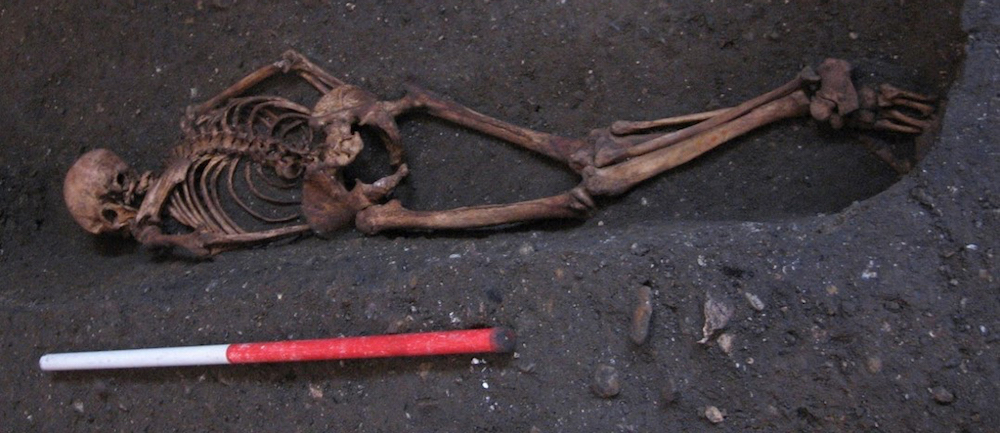When you buy through links on our site , we may earn an affiliate commission . Here ’s how it run .
The face of a British man who die about 700 years ago has been brought to life using reconstructive technology .
The medieval human was buried along with century of others in a graveyard underneath what is now the Old Divinity School building of St. John ’s College at the University of Cambridge , in the United Kingdom . By studying his remains andpiecing together his facial featuresand biological history , archeologists said they go for to understand the lives of anonymous short hoi polloi in the 13th 100 .

Archaeologists at the University of Cambridge reconstructed the face of the so-called “Context 958” skeleton.
" Most historical records are about well - off the great unwashed and especially their fiscal and legal proceedings , " work lead researcher John Robb , a professor of archeology at the University of Cambridge , said in a statement . " The less money and property you had , the less probable anybody was to ever compose down anything about you . So , skeletons like this are really our chance to learn about how the ordinary poor know . " [ 25 Grisly Archaeological Discoveries ]
Most of the skeletons found beneath St. John ’s were of destitute adults . Their burying crop from the 13th to fifteenth century , when the graveyard was attached to a hospital and charitable origination for the poor and infirm , according to the researchers .
scientist studied the skeleton of one man , dubbed Context 958 , in more detail . Measuring the man ’s pelvic ivory aid the archeologist resolve that themedieval manwas over age 40 when he die . Analyzing the jaw , zygomatic and skull also helped the researchers estimate Context 958 ’s facial social structure . And peer into his backbone revealed that he had participate in hard working class , lead to herniated vertebrae and possiblechronic back pain .

The “Context 958” skeleton was buried face-down in the cemetery of St John’s College at the University of Cambridge.
While the team was n’t capable to tell precisely what the military man ’s professing had been , or what ultimately conduce to his death , the pinched clues and sparse grave suggest that Context 958 was a laborer or craftsman of some sort , the researchers said .
" One interesting lineament is that he had a diet comparatively ample in meat or fish , which may intimate that he was in a trade or business , which give him more access to these food than a misfortunate somebody might have normally had , " Robb enunciate . " He had fallen on hard times , perhaps through illness , limiting his power to keep on working or through not have a family connection to take guardianship of him in his poverty . “While the team was n’t able to severalize precisely what the military man ’s professing had been , or what ultimately conduct to his death , the emaciated cue and sparse grave intimate that Context 958 was a manual laborer or artificer of some sort , the investigator said .
grounds ofblunt - force hurt that left a small dentine the back of Context 958 ’s head , and tooth decay that wiped out multiple molar , also provide clue that the man likely had a elusive life .

finally , Robb ’s team hopes to compare the Cambridge man ’s reconstructed biography to those of the other skeletons buried alongside him , as well as remains from other Cambridge graveyards from around the same time . The comparisons may help humanise knightly citizens as masses with a variety of life experience and stories , Robb said .
Original article onLive Science .














